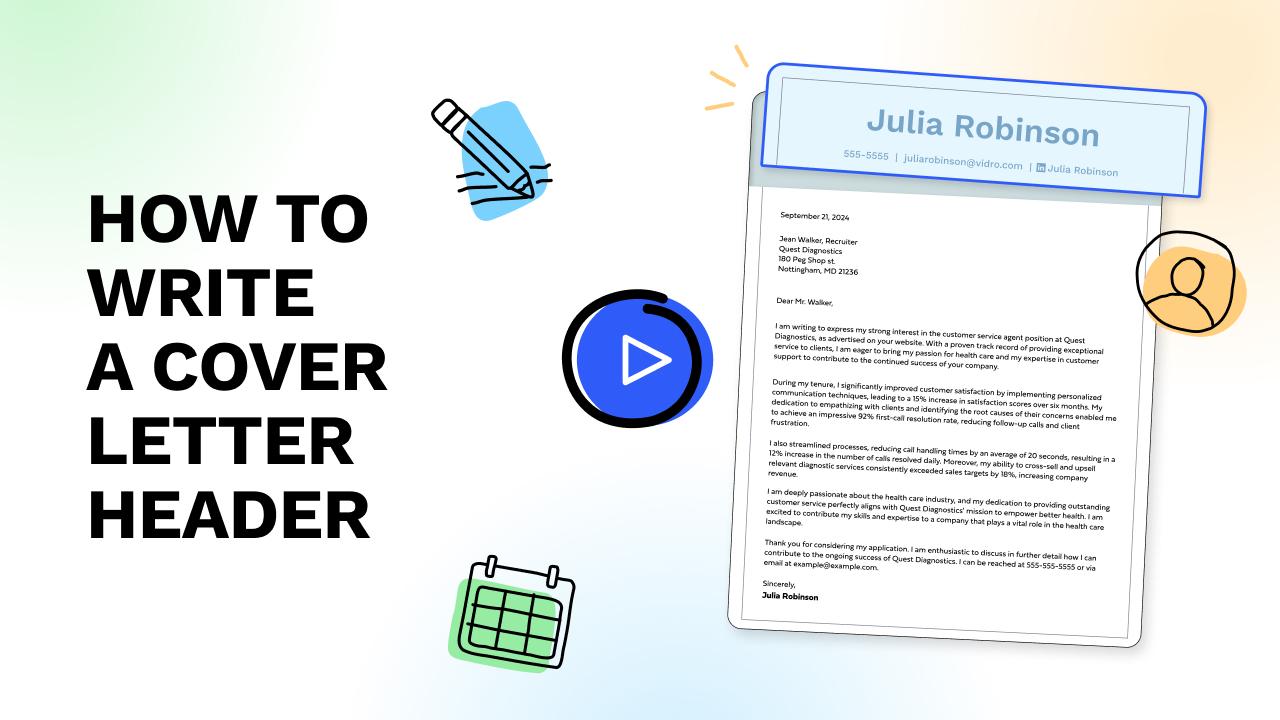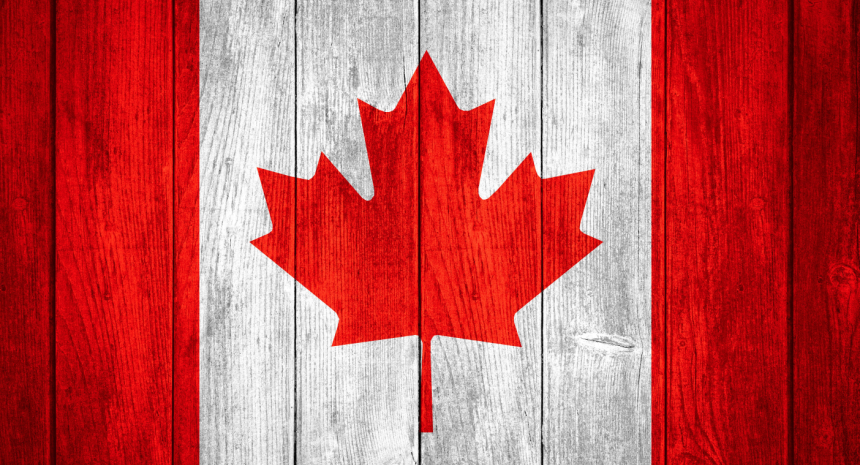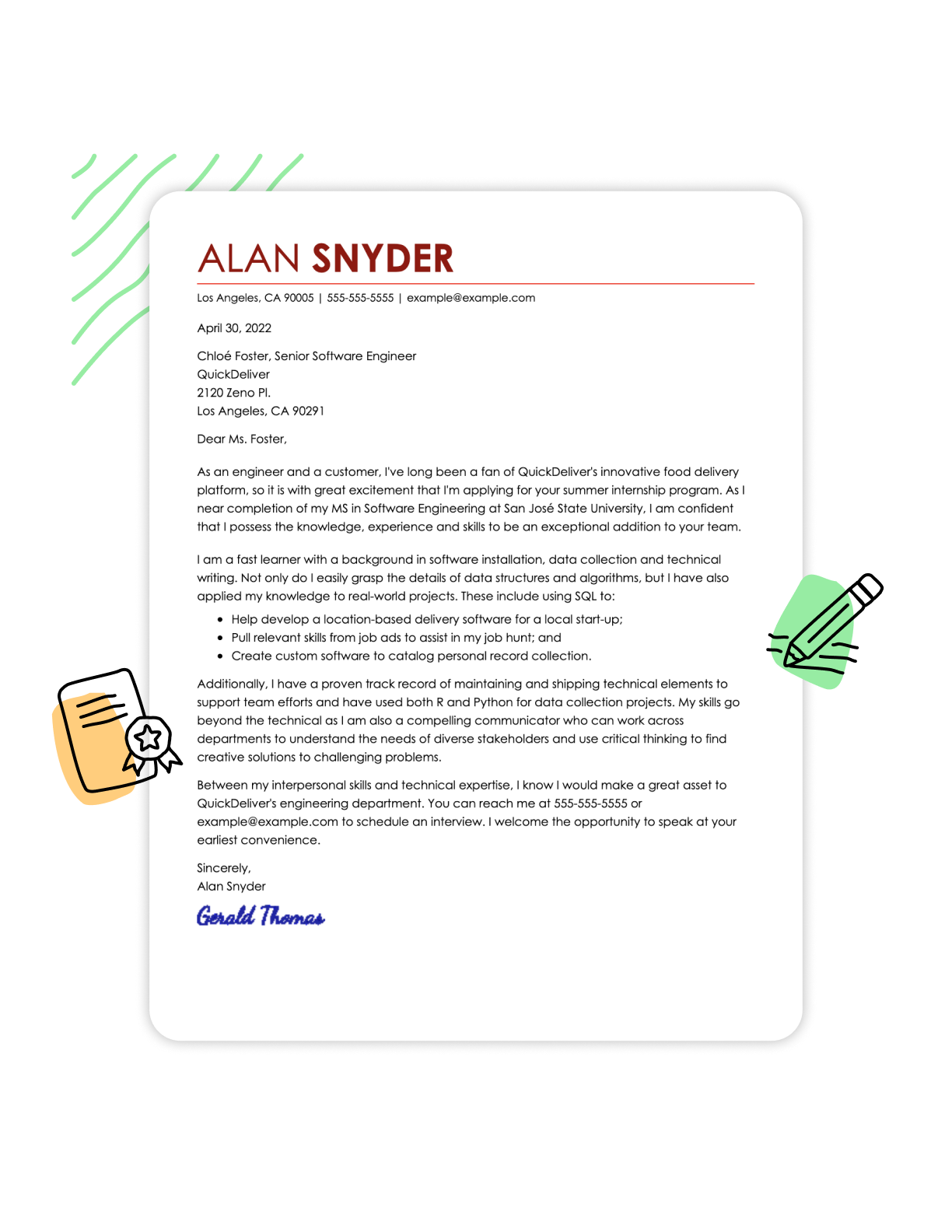The first step in building an effective cover letter is to start at the top: your cover letter header. A cover letter header might be the simplest component of your cover letter, but it’s also the unsung hero! Your letter should inspire your future employer to reach out to you for an interview. To do that, your contact information needs to be prominent, accurate and easy to find.
We’ll make this easy for you with our guide. Here, we outline everything you need to know about cover letter headers, including:
- What information belongs in a cover letter header.
- Sample cover letter headers for you to review.
- How to format your cover letter header.

Need help starting your cover letter? Try our Cover Letter Generator. This tool will help you get started with professional formatting guidance and expertly curated content suggestions to help you persuasively describe why you’re the perfect fit for the new role.
You can also get started by checking out some examples of a cover letter. Seeing how professionals in your industry approach writing their letters can be a huge help if you’re having trouble getting started. And that goes for resumes too! Our Resume Builder is another helpful resource that can simplify your job search.
What to Include in a Cover Letter Header
Not sure what goes in a cover letter header? We’ve got you covered. There are six main components that go in your header. Each one should be checked and double-checked for accuracy and kept up to date as your information changes. They are:
- Your full name.
- Your home city and state.
- Your phone number.
- Your email address.
- Your LinkedIn profile (if you have one).
- Any other relevant links, such as a portfolio or social media links (if applicable).
Pro tip
If all that sounds simple, that’s because it is! Your header shouldn’t include any information besides the essentials. If you have more than one or two portfolios or social media links you’d like to include, make a separate section for them in your resume instead. Your header should be a fast and easy way for employers to learn where you’re located and how to get in touch with you.
6 Cover Letter Header Examples
Classic 6

Modern 8

Simplify

Contemporary 2

Executive 2

Contemporary 5

How to Format Your Cover Letter Header
Learning how to write a cover letter header is easy, but the formatting is what people tend to find challenging. Fortunately, this can be easy too. Formatting your cover letter header is simple if you follow a few simple rules:
Use a larger font for your header than for the rest of your cover letter to make it stand out. The body of your letter should use a font size between 10-12 points, so make your cover letter header between 14-20 points, depending on the length of your letter. (Your cover letter should always fit on a single page.)
Feel free to use color for the header of your cover letter, but make sure it’s a color that is easy to read both on paper and on a computer screen. Darker colors often work best since lighter colors, like yellow, can sometimes be too light to read.
Choose an easy-to-read font in your cover letter header. Avoid script or fonts like comic sans, which can be difficult for a recruiter to read and could confuse an applicant tracking system (ATS).
Cover Letter Header FAQ
No. A letterhead is a printed heading at the top of stationery. It contains the sender’s name and, if the stationary is being used for a company’s correspondence, a logo and address. Cover letter headers, on the other hand, are most often sent digitally and always contain the applicant’s name, location and contact information so that recruiters can contact them for a job interview.
The best way to title your cover letter is to use your name, the job title you seek and the type of document it is (in this case, “cover letter”). For example, you might title your cover letter, “anne_dennis_cashier_cover_letter.jpg” or “patricia_kim_accountant_cover_letter.doc.” Shorter and simpler are almost always better, and your file name should never include unhelpful text like strings of numbers.
The layout of a cover letter contains six basic elements: the header, the salutation or greeting, the introduction paragraph, the body of the letter, the closing paragraph and the signoff. These sections should always appear in the same order on every letter you write.
Was this information about How To Write A Cover Letter Header helpful? Let us know!
Heather is the Content Strategy Manager for Resume Now and a Certified Professional Resume Writer (CPRW) with more than ten years of experience writing about job search and career topics. She is based in San Francisco.
More resources

How to Make a Canadian Resume (Format, Template + Examples)
Creating a Canadian resume is key to getting a job in Canada. ...

How to Write a Resume for an Internal Position (Guide + Examples)
Ready for a new role within the same company? We ll help you...

The Great Workplace Reckoning: How 2025 Burned Out Workers & What’s Next for 2026
Resume Now provides a look inside the burnout pay and ethics...

Interview-Winning Culinary Resumes Examples and Tips
Build & download your Culinary resume in a few simple steps. B...

Interview-Winning Cosmetology Resumes Examples and Tips
Build & download your Cosmetology resume in a few simple steps...

Interview-winning Copywriting Resumes Examples and Tips
Build & download your Copywriting resume in a few simple steps...

